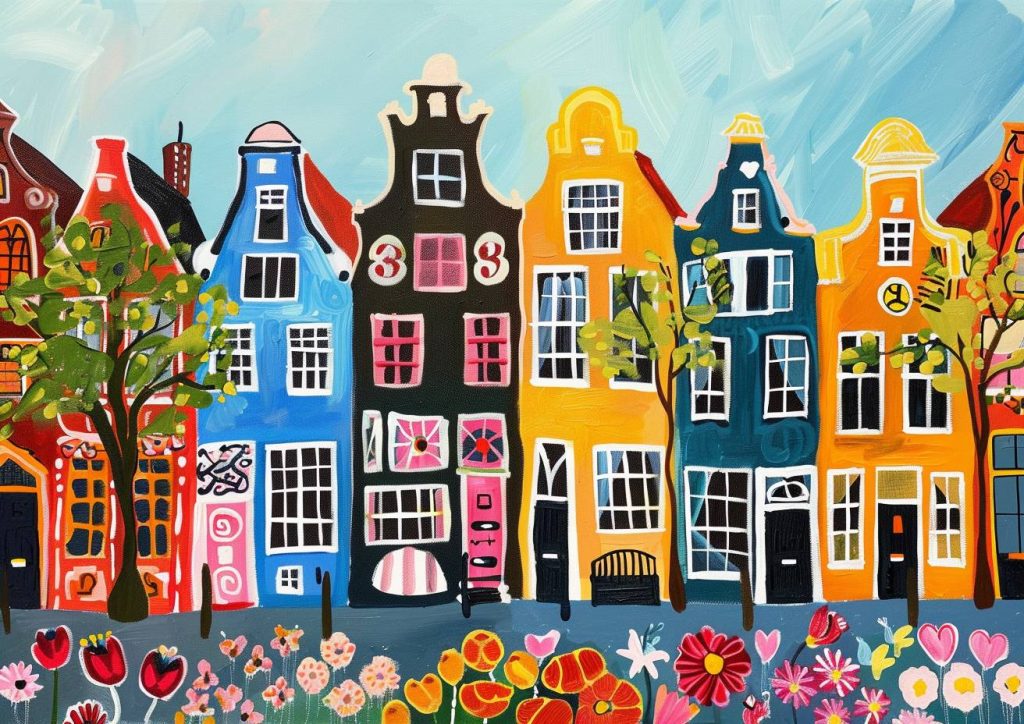Introduction
The world of art and antique collecting is one of profound passion, exclusivity, and financial savvy. For centuries, elite collectors have been drawn to rare antiques and unique artworks, not only for their aesthetic value but also for their historical significance and potential as long-term investments. While the market for contemporary and mass-produced items grows, there remains a persistent allure to collecting rare and one-of-a-kind pieces that hold intrinsic cultural, historical, and personal value.
What is it about these rare collectibles that captivate the attention of affluent collectors? Is it their financial potential, their connection to history, or perhaps a combination of both? This article delves into the reasons why elite collectors are more inclined to invest in rare antiques and unique artworks, looking at factors such as cultural significance, investment potential, emotional connection, and the pursuit of exclusivity.
1. The Appeal of History and Heritage in Collecting
One of the primary reasons why collectors are drawn to rare antiques is the deep connection to history and heritage that these items provide. Antiques are physical representations of the past, offering a window into the lives, customs, and cultures of earlier generations. By acquiring a rare antique, a collector is not simply purchasing an object—they are acquiring a tangible piece of history.
1.1 The Cultural and Historical Significance of Antiques
Rare antiques, particularly those that date back centuries, hold immense cultural and historical value. These objects often carry stories of bygone eras, capturing the essence of a specific time, place, or society. For example, a piece of Chinese porcelain from the Ming Dynasty or an ancient Greek vase tells the story of its civilization, its craftsmanship, and the ideas it represents.
Collectors are often motivated by the desire to preserve these historical treasures and to share their stories with future generations. For the elite collector, owning a piece of history is not just an investment but a means of contributing to the preservation of cultural heritage.
1.2 The Emotional Appeal of Connecting with the Past
There is also an emotional aspect to collecting antiques. Elite collectors often seek out rare items that resonate with them personally, perhaps because of a familial connection, a specific interest in a particular time period, or a fascination with a certain culture. Owning an antique that connects with personal values or memories can provide a sense of fulfillment that goes beyond financial investment.
- Example: A collector with a passion for Renaissance art may be drawn to own a work from that period, not only for its artistic value but for the personal connection it provides to a pivotal moment in history.
2. The Exclusivity and Uniqueness Factor
For the elite collector, exclusivity is a major driving force in their interest in rare antiques and unique artworks. These objects are not mass-produced; they are often one-of-a-kind pieces or part of a limited series, which makes them inherently exclusive. Exclusivity enhances the appeal, as owning something that few people in the world can have creates a sense of prestige and social distinction.
2.1 The Desire for Status and Prestige
Investing in rare and unique items allows elite collectors to distinguish themselves from others. The rarity of the object, whether it’s an antique or a modern artwork, signifies that its owner has access to resources, knowledge, and cultural capital that most people do not. This exclusivity can enhance a collector’s social standing and reputation among peers.
- Example: At an auction, a collector may pay millions for a rare work by Pablo Picasso, not only because of its artistic value but also because it signals their position in the world of high society and art collecting.
2.2 The Social Value of Collecting
Collecting rare and unique pieces is often seen as a hobby or passion of the wealthy elite. These collectors attend exclusive events like private auctions, galas, and exhibitions where they can showcase their acquisitions and mingle with fellow collectors, artists, and cultural leaders. The social value of such interactions can be as important as the value of the items themselves.
3. The Investment Potential: Antiques and Art as Financial Assets
For many elite collectors, the financial potential of rare antiques and unique artworks is a significant motivator. Over time, these collectibles have proven to be a stable and, at times, highly profitable investment. Unlike more traditional forms of investment, such as stocks and bonds, rare antiques and artworks are tangible assets that often appreciate in value, especially when their rarity and cultural significance are taken into account.
3.1 Art and Antiques as Long-Term Investments
Many collectors view their acquisitions as long-term investments that will appreciate in value over time. While the art and antique market can fluctuate, certain pieces have demonstrated a tendency to increase in value, often outpacing inflation and other financial assets. The rarity and cultural importance of these items make them attractive to investors who are looking for alternative investments.
- Example: A rare piece of antique furniture from the 18th century may have a relatively low price tag when it is first acquired but may see its value multiply over time due to its scarcity and demand in the market.
3.2 The Role of Auctions and Record-Breaking Sales
Auctions play a central role in the world of elite art and antique collecting. High-profile auction houses like Sotheby’s and Christie’s regularly sell rare and unique items for record-breaking prices, and these sales often attract significant media attention. The potential for large returns on investment drives many collectors to purchase rare items, with the hope that they can sell them for a profit at a later date.
- Example: In 2015, a rare painting by Leonardo da Vinci, “Salvator Mundi,” was sold at auction for over $450 million, making it the most expensive piece of art ever sold. Such sales underscore the potential for financial gain in the world of art collecting.

4. The Preservation of Craftsmanship and Skill
One of the key motivations for investing in rare antiques and artworks is the opportunity to preserve and support craftsmanship and skill. Many of these items were created by highly skilled artisans, and by collecting them, elite collectors help ensure that the techniques used to create them are not forgotten. Furthermore, acquiring these pieces provides the collector with an opportunity to celebrate the craftsmanship that went into producing them.
4.1 The Appreciation for Mastery in Craftsmanship
Elite collectors often have a deep appreciation for the skills and techniques used by artisans to create these objects. Whether it’s the intricate woodwork of an antique chest or the fine brushstrokes in a Renaissance painting, collectors value the artistry and mastery behind each piece. By investing in rare antiques, they help preserve traditional craft techniques and support the legacy of artisans who have passed down their skills for generations.
- Example: Collectors who invest in rare Chinese porcelain may recognize the intricate glaze techniques and craftsmanship that have been perfected over centuries, valuing not just the beauty of the piece but also the tradition and expertise behind its creation.
4.2 Supporting Artists and Artisans
In some cases, elite collectors may also invest in contemporary works by emerging or well-known artists. In this context, the investment is not just in the piece itself but in the artist’s career and the cultural movement they represent. By supporting artists, collectors help ensure that the traditions of artistic creation continue to thrive.
- Example: Collecting works by up-and-coming contemporary artists can help fund their creative endeavors, allowing them to further develop their skills and contribute to the cultural landscape.
5. The Emotional Fulfillment and Intellectual Satisfaction of Collecting
For many elite collectors, the investment in rare antiques and unique artworks is not only financially motivated but also driven by emotional fulfillment and intellectual satisfaction. Collecting can be a deeply personal experience, offering a sense of purpose and connection to history, culture, and the broader world of art.
5.1 The Joy of Discovery
Many collectors derive joy from the process of acquiring new pieces, discovering hidden gems, and learning about the history and significance of each item. This sense of discovery is particularly potent when it comes to rare antiques, where the process of research and acquisition is often as fulfilling as the final ownership of the object itself.
- Example: A collector who spends years researching a specific historical period or style may feel an immense sense of satisfaction when they finally acquire a rare item from that period, knowing that their patience and dedication have paid off.
5.2 Intellectual Engagement with Art and History
Collecting rare antiques and artworks also offers intellectual satisfaction. Collectors often immerse themselves in the study of art history, antique preservation, and cultural trends. This engagement with the intellectual side of collecting enhances the experience, as it allows collectors to not only appreciate the aesthetic beauty of the objects but also understand their deeper cultural, social, and historical significance.
6. The Role of High-End Galleries and Exclusive Networks
Elite collectors often have access to exclusive galleries and networks that offer them early access to rare items, private showings, and specialized knowledge. These networks allow collectors to connect with other like-minded individuals, fostering a sense of community within the world of art and antique collecting.
6.1 Private Galleries and Exclusive Auctions
Elite collectors often have relationships with private galleries and auction houses, which give them access to rare pieces before they are made available to the general public. This exclusivity allows them to acquire items that are not only rare but also in high demand, ensuring that their collections remain unique and valuable.
6.2 Networking with Fellow Collectors
The social aspect of collecting also plays a significant role in the motivations of elite collectors. By participating in exclusive art events and private auctions, collectors form relationships with fellow enthusiasts, artists, and curators. These networks provide opportunities for knowledge exchange, and collectors often feel a sense of camaraderie in their shared passion for rare and unique works.
Conclusion
Elite collectors are drawn to rare antiques and unique artworks for a variety of reasons, ranging from historical and cultural significance to emotional fulfillment and financial investment. For many, collecting is not just about acquiring beautiful objects; it is about preserving history, supporting craftsmanship, and gaining intellectual and emotional satisfaction. The combination of exclusivity, cultural connection, and potential financial gain makes rare antiques and artworks highly desirable to collectors who are looking for more than just luxury—they are seeking to engage with the past, support artists, and invest in items that carry meaning and value beyond the material.
As the market for these rare pieces continues to evolve, it is clear that elite collectors will continue to play a key role in shaping the future of the art and antique world. By investing in these exceptional objects, they are not only securing their place in the world of luxury but also helping to ensure that the cultural and artistic heritage of humanity is preserved for future generations.
















































